SHRI SHIVAJI SCIENCE COLLEGE, AMRAVATI
DBT STAR COLLEGE PROJECT ACTIVITY
ACTIVITY REPORT
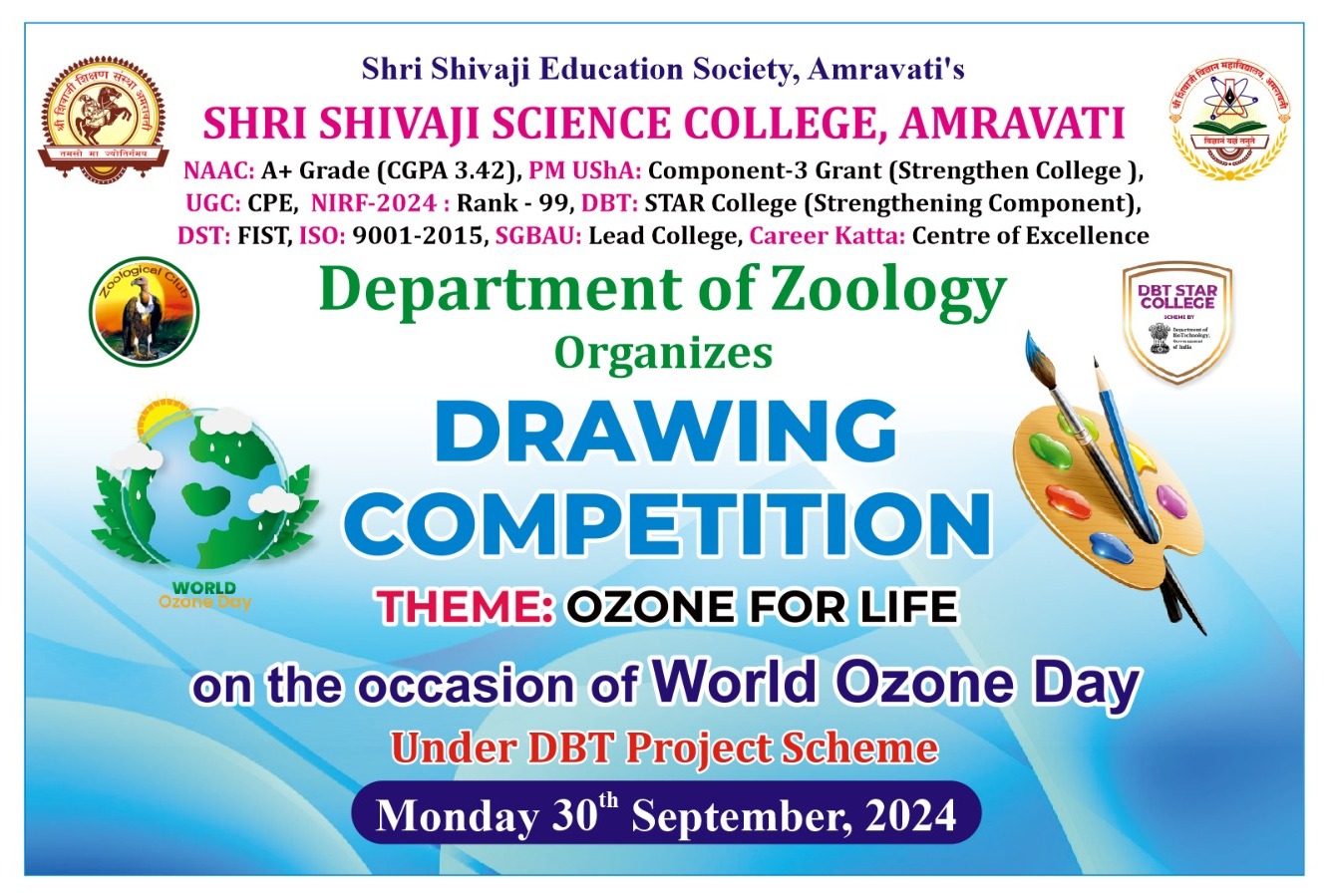
World Ozone Day
Activity Dates: 16/09/2024
Type of Activity: Outreach Activity
Organizing Department: Department of Zoology
Program Coordinators: Dr. G.A.Wagh, In charge Teacher: Dr. G.D. Hande
Head of the Department: Prof. & Head Dr. J. D. Dhote
External Collaborator (if any): No
Objectives:
- Global cooperation protecting life on Earth
- Its purpose is to regulate the knowledge about production, consumption, and emissions of ozone-depleting substances.
- Preservation of Ozone Layer.
- Ozone Layer Depletion.
- Protects life on earth by absorbing harmful ultraviolet-B (UV-B) radiation from the sun.
No of Beneficieries: 43 Students
Classes Involved: B.Sc. and M.Sc.
Venue of the Activity: UG Laboratory of Dept. of Zoology
Activity Report:
THEME: OZONE FOR LIFE
Students should choose any one topic from following:
• Global cooperation protecting life on Earth
• Preservation of Ozone Layer
• Ozone Layer Depletion
• Ozone for Life
Objectives:
• Global cooperation protecting life on Earth
• Its purpose is to regulate the knowledge about production, consumption, and emissions of ozone-depleting substances.
• Preservation of Ozone Layer.
• Ozone Layer Depletion.
Target Group: B.Sc. and M.Sc. Students.
No. of beneficiaries: 43 Students.
Department of Zoology is actively engaging in number of curricular and extracurricular activities keeping students of diverse field in mind. The Department has also contributed for the social awareness and playing its role and duty regularly up- liftmen of the human society. The ozone layer, a fragile shield of gas, protects the Earth from the harmful portion of the rays of the sun, thus helping preserve life on the planet. The phase out of controlled uses of ozone depleting substances and the related reductions have not only helped protect the ozone layer for this and future generations, but have also contributed significantly to global efforts to address climate change; furthermore, it has protected human health and ecosystems by limiting the harmful ultraviolet radiation from reaching the Earth.
Ozone: A Double-Edged Sword in the Atmosphere- Ozone, a molecule composed of three oxygen atoms (O₃), plays a crucial role in Earth's atmosphere, both as a protective shield and a harmful pollutant. Its dual nature depends on its location in the atmosphere.
Stratospheric Ozone: Earth's Sunscreen- In the stratosphere, 10 to 50 kilometers above the Earth's surface, ozone forms a layer that acts as a natural sunscreen, absorbing harmful ultraviolet (UV) radiation from the sun. This UV radiation can cause skin cancer, cataracts, and damage to plants and marine ecosystems. The stratospheric ozone layer is essential for life on Earth as we know it.
Tropospheric Ozone: A Respiratory Threat- In contrast, ozone in the troposphere, the layer closest to the Earth's surface, is a harmful pollutant. It is formed by chemical reactions between pollutants emitted by cars, power plants, and industrial sources in the presence of sunlight. Tropospheric ozone is a major component of smog and can cause respiratory problems, such as asthma and bronchitis, as well as damage to crops and forests.
Ozone's Role in Air Quality-Ozone is a complex molecule with both beneficial and harmful effects. Its concentration in the atmosphere is influenced by various factors, including sunlight, temperature, and the presence of pollutants. Understanding the science behind ozone is crucial for addressing air pollution and protecting human health and the environment.
The scientific confirmation of the depletion of the ozone layer prompted the international community to establish a mechanism for cooperation to take action to protect the ozone layer.
In 1994, the United Nations General Assembly proclaimed 16 September the International Day for the Preservation of the Ozone Layer, commemorating the date of the signing, in 1987, of the Montreal Protocol on Substances that Deplete the Ozone Layer. On World Ozone Day, it is imperative to reflect on the progress made and the challenges that still lie ahead.
The drawing competition showcased students creativity and talent. The event witnessed a diverse range of artistic styles and interpretations of the theme.
The innovative competition was brought together with environmental awareness and art. The participants displayed their imagination, drawing skill and creativity. The objective behind organization of poster making competition is to bring out the creative expression of students and to gauge their knowledge and awareness of them . The theme of ozone layer protection is rich with artistic possibilities. They can depict the ozone layer as a protective shield, a colorful bubble surrounding the Earth, or a fragile web that needs to be preserved. They can illustrate the harmful effects of ozone depletion, such as increased UV radiation, skin cancer, and damage to ecosystems. Alternatively, they can portray the positive impact of international efforts to protect the ozone layer, such as the Montreal Protocol.
The Montreal Protocol, an international treaty signed in 1987, phased out the production and use of ODS. This landmark agreement has led to a significant recovery of the ozone layer, and it is projected that the ozone hole will fully recover by the middle of this century.
Ozone's Role in Air Quality
Ozone is a complex molecule with both beneficial and harmful effects. Its concentration in the atmosphere is influenced by various factors, including sunlight, temperature, and the presence of pollutants. Understanding the science behind ozone is crucial for addressing air pollution and protecting human health and the environment.
Ozone, with its dual nature, serves as a reminder of the delicate balance of Earth's atmosphere. The stratospheric ozone layer shields us from harmful UV radiation, while tropospheric ozone poses a threat to human health and the environment. The success of the Montreal Protocol in addressing the ozone hole demonstrates the power of international cooperation in protecting our planet. As we continue to monitor and manage ozone levels, we can ensure a healthier and more sustainable future for generations to come.
The judging criteria for these competitions often include creativity, originality, relevance to the theme, artistic skill, and the overall impact of the artwork. Judges may also consider factors such as the use of color, composition, and the ability to convey a clear message.
By participating in such competitions, young artists not only develop their artistic skills but also gain a deeper appreciation for environmental issues. They learn about the importance of sustainable practices and the role they can play in protecting the planet. Additionally, these competitions can foster a sense of community and inspire collaboration among young people
• World Ozone Day Celebration Activities:
• Create artwork, articles, plays, or paintings that explore the idea of a world without the ozone layer.
• Create logos for products that are ozone- and CFC-friendly.
• Send newspaper stories on the ozone problem or write an Ozone World Day essay to your community.
The activity was carried out under the guidance of Dr. G. V. Korpe, Principal, Dr. D. D. Khedkar Co-Ordinator DBT Star Project with Dr. J. D. Dhote, Professor & Head Department of Zoology, Dr. G. A. Wagh, Professor, Dept. of Zoology & Department DBT star Project Coordinator.
The drawing competition was evaluated by Dr. S. P. Ingole, Professor & Head, Department of Environmental Science. Dr. G. D. Hande, Program In charge & Assist. Professor Dept. of Zoology and also Committee members, Dr. S. V. Gawande, Dr. P. M. Ramteke, Dr. S. J. Kawade, Dr. A. R. Rajoria and non-teaching staff, Department of Zoology.
Outcomes:
- Awareness about the Global warming.
- Protection of environment and Earth
- To spread awareness amongst students
- Preservation of Ozone Layer.
- We can stop the air pollution by minimum use of vehicles and plantation of tree
Photos:
 PARTICIPATION OF STUDENTS IN DRAWING COMPETITION |  Submited Drawing |
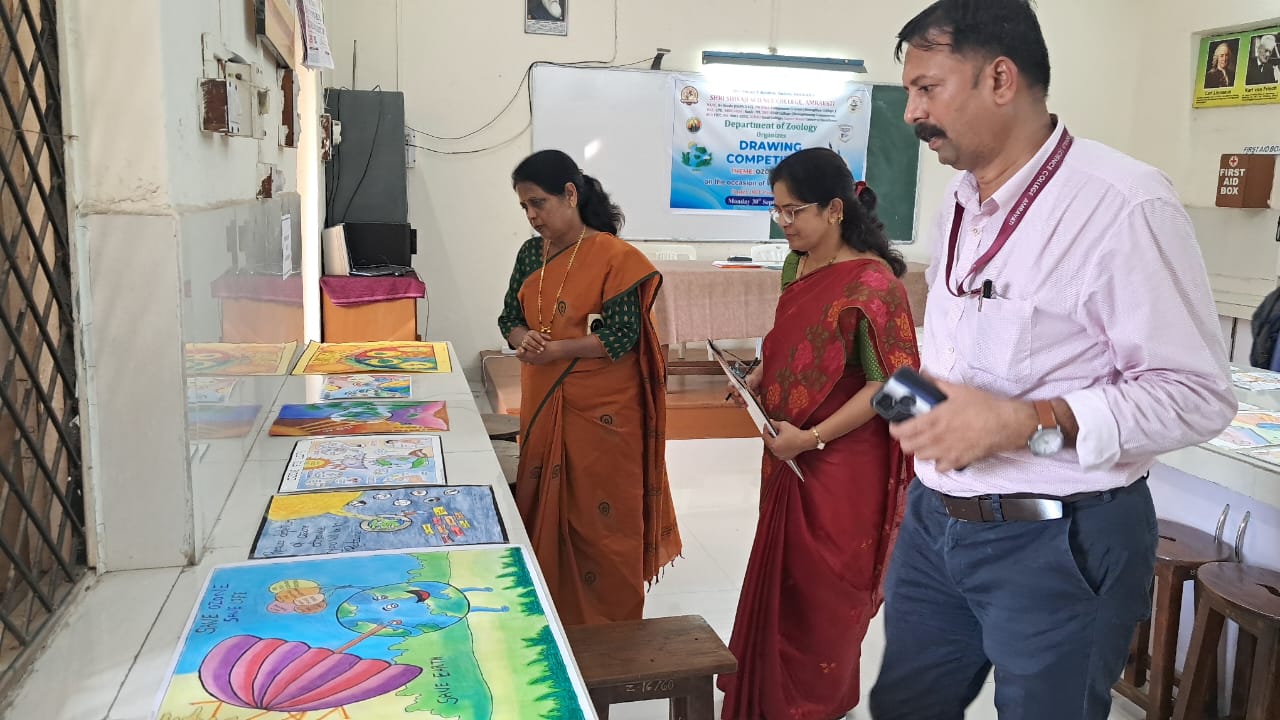 EVALUATION OF PARTICIPANT DRAWINGS | 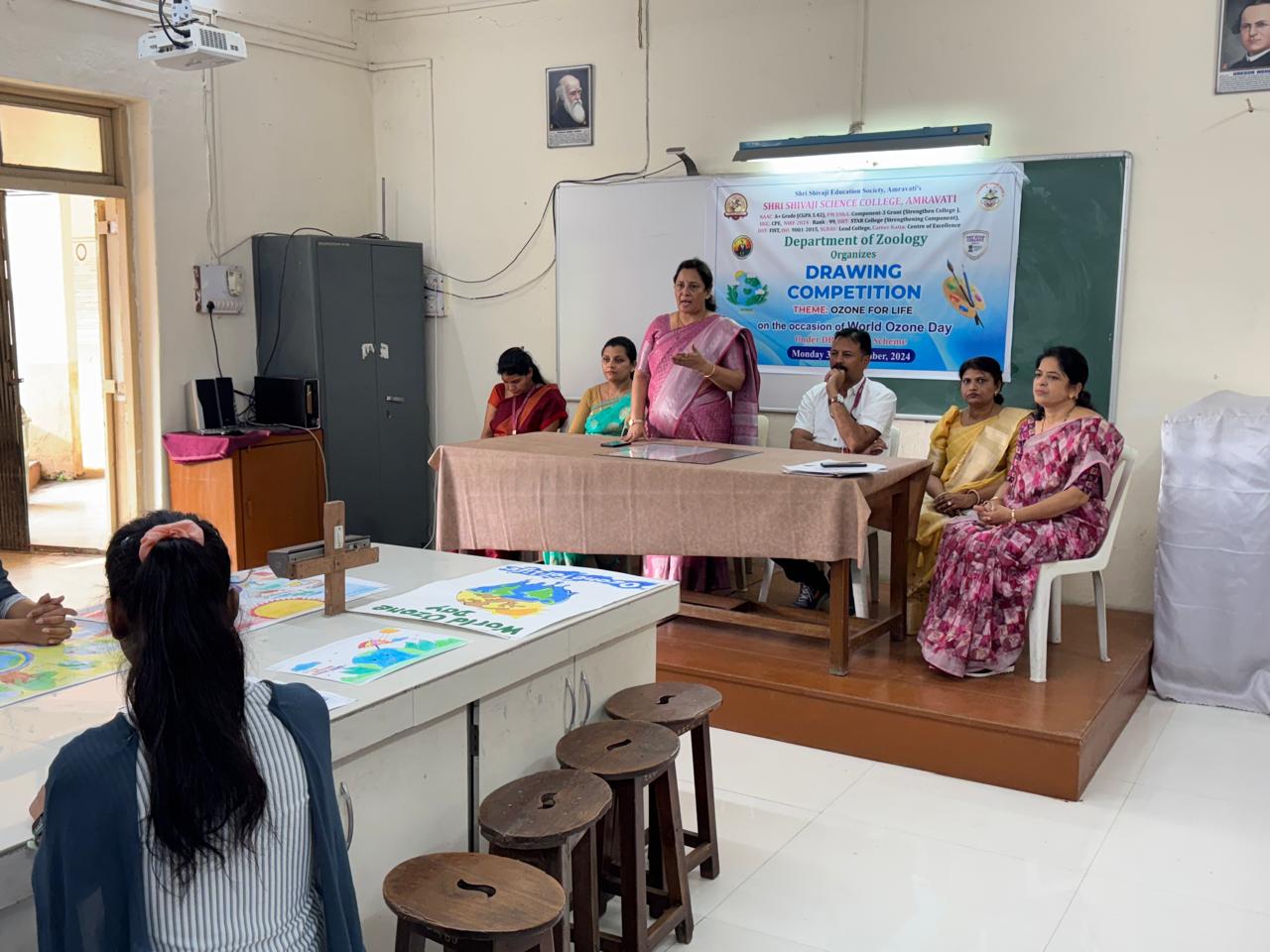 Address speech |
 CONDUCTION | 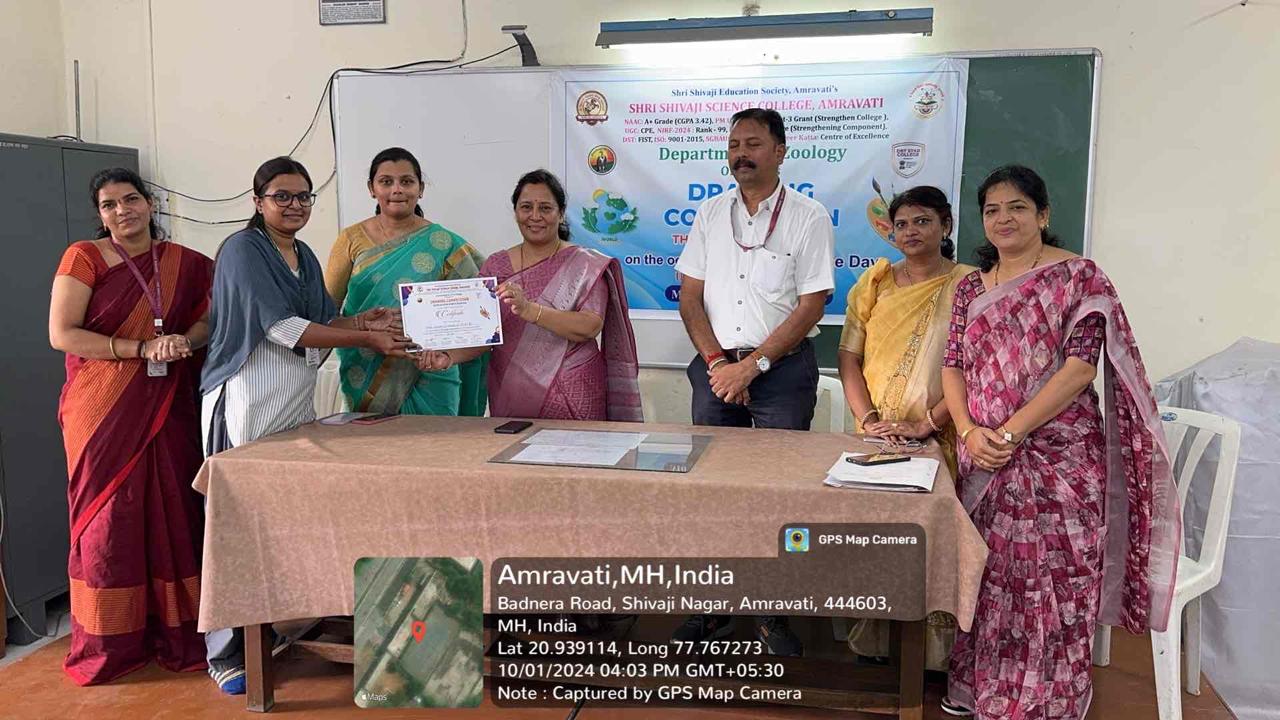 CONDUCTON OF THE PROGRAMME |
Attendance Sheet:
 |
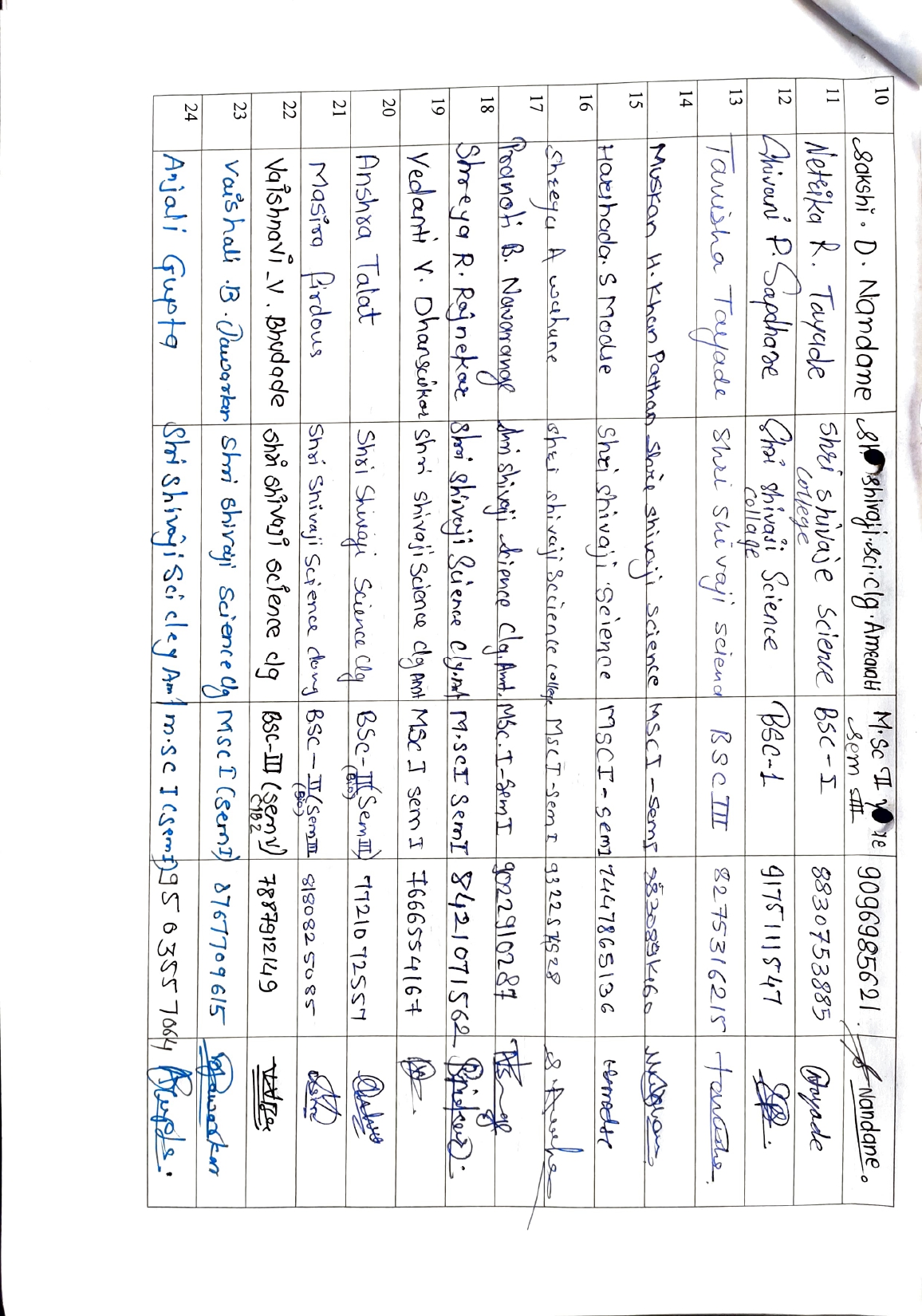 |
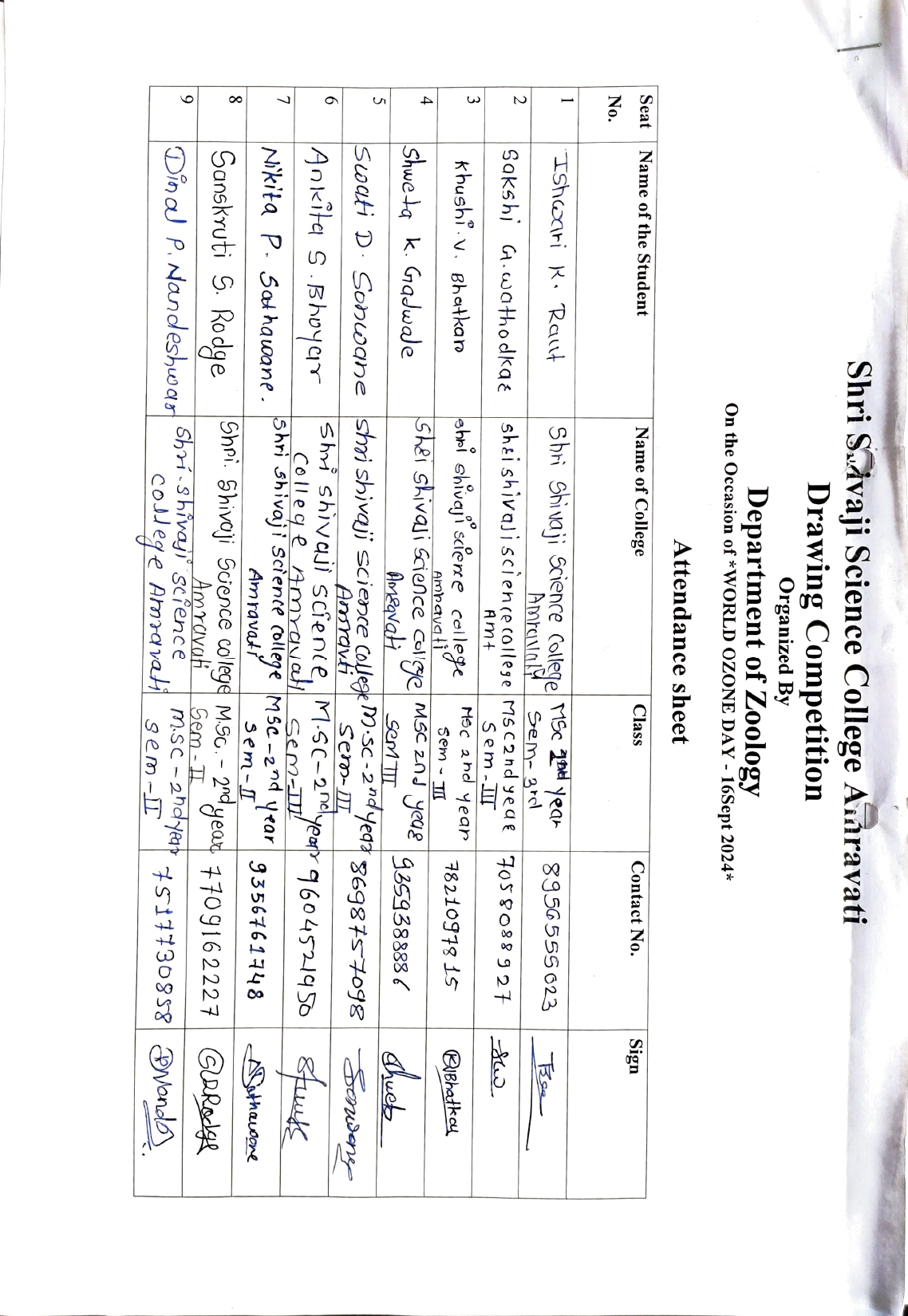 |
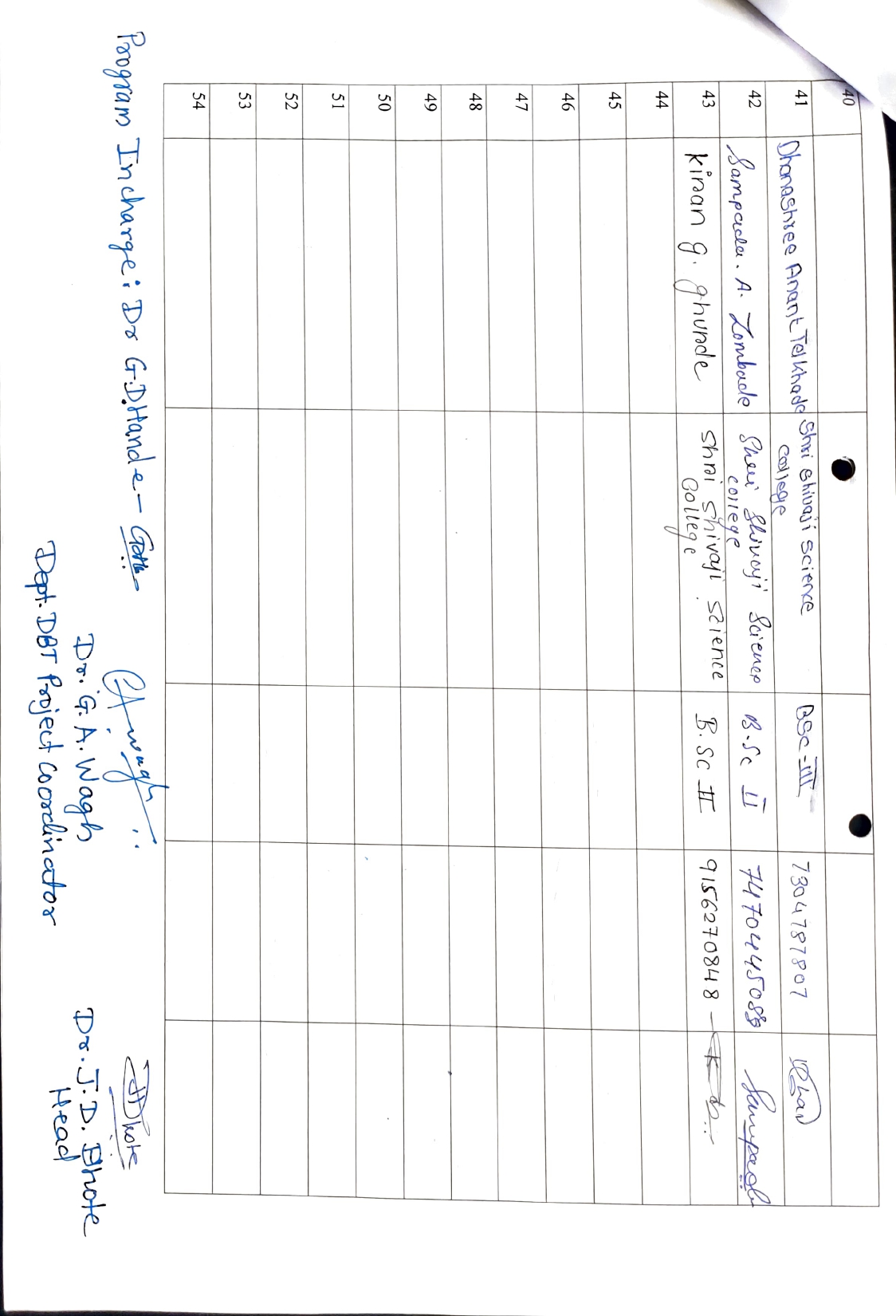 |